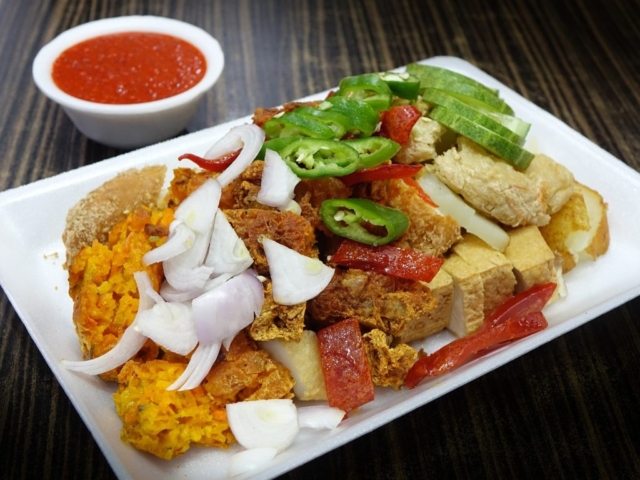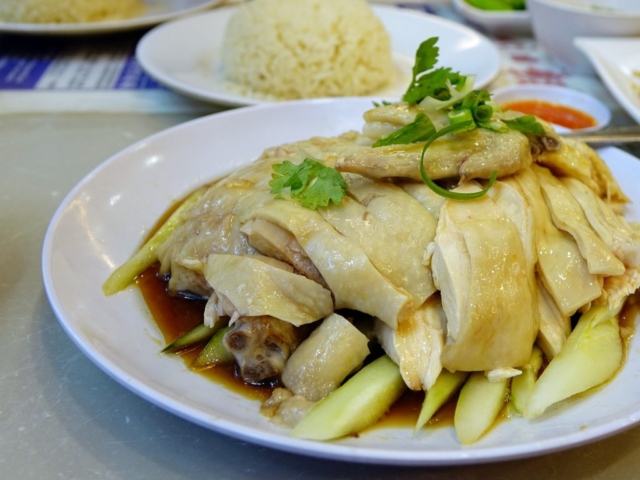In Singapore, food is perceived as crucial for national identity unifying culture. Food is a frequent topic of conversation between locals. You will also find quality Chinese, Malaysian, Indian, Japanese, Thai, Italian, French and American cuisine. The Food Festival is celebrated every year in July.
Most dishes are eaten with a fork and spoon (fork in left hand and spoon in right hand). Noodles and Chinese dishes are served with chopsticks, while Malaysian and Indian dishes can be eaten with your right hand.
Due to many different religious beliefs, keep in mind several dietary restrictions. Muslims don´t eat pork and consume foods labeled HALAL. Hindus don´t consume beef. And there is also a significant group of vegetarians and vegans.
Singaporean cuisine
The local cuisine is divided into 5 parts: meat, seafood, rice, noodles and dessert, but is especially famous for seafood. The kitchen is a unique combination of Malaysian, Chinese, Indian and Western elements. Below are some of the most popular dishes.
Chilli crab – Crab filled with spicy sticky chilli sauce.
Kaya – spread made from eggs and coconut. Serve on toast for breakfast with a strong sweet coffee.
Laksa – probably the best known Singapore dish (white noodles in creamy, coconut soup with curry, egg and prawns).
Mee siam – rice flour noodles served in sweet and sour tamarind soup with dried shrimp and fermented beans.
Popiah – Fresh or Fried Spring Rolls. The filling is prepared from boiled turnip, fried tofu, pork and shrimp.
Chinese rojak – a salad with a pineapple, white turnip, cucumber, tau pok (fried curd) salad with thin tiny bunga cantan (ginger), shrimp paste and sugar, sprinkled with crushed peanuts.
Indian rojak – consists mainly of fried pancakes from the flour and various legumes with cucumber, tofu, sweet and spicy sauces.
Satay bee hoon – rice noodles served with peanut and chilli sauce.
Mee rebus – a dish of egg noodles with a spicy, slightly sweet sauce, boiled egg, and lime.
Mee Soto – Chicken soup with pure broth, crushed chicken breast,
Nasi lemak – rice cooked in coconut milk, served with anchovies, peanuts, cucumber slices,
Otah / Otak – a mixture of ground fish, coconut milk, chilli and other spices. The mixture is grilled in a banana or coconut leaf and is usually served as a side dish to other dishes.
Bak chor mee – noodles with minced pork, fried anchovies, vegetables,
Bak kut teh – pork rib broth, served with white rice and pickled vegetables.
Chee cheong fun – a popular breakfast made from rice noodles with sauce, fried meat, fish balls or fried tofu.
Hainanese chicken rice – steamed or roasted chicken flavored with soy sauce and sesame oil served with rice, broth ,and
Hokkien mee – soup with fried noodles and seafood.
Steamboat – the so-called hot pot. In the restaurant, will bring you a pot with broth on the table burner, to which you add meat, fish and vegetables to taste. After cooking, pour the broth into a bowl of noodles or rice.
Tau huay – a bowl of tofu curd in syrup. It is a traditional Chinese dessert that is served warm or cold.
The smallest of the three big ethnic groups in this area have the least impact on the local Indians cuisine. Delicate and authentic Indian food can be found in Little India.
Desserts
Chendol – is made from green noodles, beans, palm sugar and coconut milk.
Ice kachang – ice crush with sweet red beans. You can also come across a richer version that adds gula melaka (palm sugar), jelly, corn, condensed milk or coconut cream.
Kuih (or kueh) – baked “cake” prepared from coconut milk, grated coconut, sticky rice or tapioca.
Pisang
As for the flavor of ice cream, you can taste for example durian or red beans. The specialty is ice cream served in bread.
Fruit
Several tropical fruits can be consumed throughout the year. The best known is DURIAN, which produces a characteristic odor. Other favorites include mangosteen, jackfruit, longan, lychee, rambutan,
Beverages
If you order local kopi (Malaysian word for “coffee”) or teh (“tea”), prepare yourself for the fact that these drinks are served with a spoon of sugar or sweet condensed milk. If you only want a cup of coffee or black tea without sugar and milk, order kopi-o kosong or teh-O kosong! If you want a cold version with ice, just add a peng at the end of the word (kopi-O-peng, teh-peng). The price is about 1 SGD.
Where to eat
The cheapest and most popular places are hawker centers. Prices are low ($ 2-5 per meal), hygiene standards high (each stand has a health certificate that classifies it from A to D).
Each district in Singapore has its own hawker center and prices can be a little different. Newton Circus (Newton MRT), Gluttons Bay and Lau Pa Sat in the center are the most popular, but it doesn’t mean they’re the tastiest. Many excellent stalls are located in residential neighborhoods far from tourist areas and are not promoted in the media. The best way to find these stalls is to ask the locals (not the guides!). A good example is the Old Airport Road Food Center in a residential neighborhood near Dakota MRT.
Valuation
In 2016, Hong Kong Soya Sauce Chicken Rice and Noodle and Hill Street Tai Hwa Pork Noodle became the first Michelin star food stalls.
In 2011, four Singaporean dishes were included in the list of 50 world’s most delicious foods. The award was awarded to Chicken Rice Hainanese, Chili Crab, Katong Laksa and Roti Prata.






